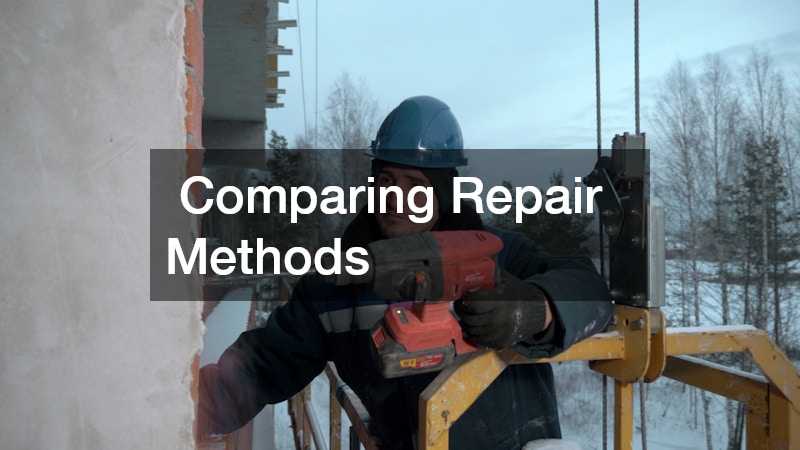Maintaining the structural integrity of a property is essential for preserving its value and ensuring the safety of its occupants. Foundation repairs play a crucial role in this maintenance, as they address underlying issues that can lead to significant problems over time. By attending to foundation concerns promptly, homeowners can avoid costly damages and bolster the longevity and market appeal of their property.
Understanding Foundation Damage
Foundation damage can manifest in various forms, including cracked walls, uneven flooring, and misaligned doors and windows. When left unaddressed, these issues may escalate, leading to more severe structural damage that can compromise the safety and stability of the home. Timely intervention helps to arrest potential damage early on, maintaining the foundation’s integrity and securing the property’s future.
In addition to visible damage, foundation problems can often lead to hidden issues that only worsen over time. For example, a cracked foundation might allow water infiltration, which can decay structural components and foster mold growth. By addressing foundation issues promptly, homeowners can mitigate such risks, ensuring their home remains secure and habitable.
The Cost of Delaying Repairs
Delaying foundation repairs can lead to mounting expenses over time, as minor issues may progress into substantial structural deficiencies. Foundation problems rarely resolve themselves and almost always degenerate, requiring more extensive and costly interventions. Homeowners who postpone necessary repairs risk entrenching their financial burden as neglected damage becomes increasingly expensive to correct.
Beyond repair costs, delayed intervention can affect a homeowner’s ability to finance or sell their property. Prospective buyers and lenders often require inspection reports to ensure a home’s integrity, and unresolved foundation issues can lead to unfavorable assessments. As a result, the financial implications of deferred repairs extend beyond immediate costs, potentially impacting property transactions and financing options.
Impact on Property Value
Unresolved foundation problems can significantly diminish a home’s market value, as potential buyers are wary of investing in properties with known structural issues. A house with a compromised foundation can appeal less to the market, resulting in lower offers or extended time on the market. Addressing foundation issues restores property value, enhancing its competitiveness in the real estate market.
Additionally, a well-maintained foundation reflects positively on a property, indicating that the homeowner has taken consistent care of the residence. This impression can increase buyer confidence, leading to more robust market interest and potentially higher sale offers. Protecting property value through foundation repairs is thus a prudent strategy for homeowners looking to maximize their return on investment.
Visible Exterior Signs
Exterior signs of foundation trouble often include cracks in the brickwork or concrete, which indicate shifting or settling beneath the surface. Other noticeable symptoms are gaps around window frames and doors, causing issues with their operation. If left unchecked, what starts as small visual cues can herald more significant structural issues.
Further evidence of foundation problems might appear as a noticeable slope in exterior concrete surfaces such as driveways or patios. These indicators are less easy to ignore and often suggest deeper issues with the foundation itself. Checking and addressing these external signs promptly can help prevent them from escalating into more significant problems.
Interior Symptoms to Watch For
Interior signs of foundation distress can be insidious yet telling, with common indicators including uneven floors or a sense of slanting surfaces. This shifting can cause strain on the structure, leading to visible consequences such as doors and cabinets not closing correctly. Early detection is crucial to maintaining the health and stability of a home’s interior spaces.
Cracks in the walls, particularly near doors and windows, are another significant symptom of underlying foundation issues. These splits often signify uneven settling or shifting that needs to be addressed before it leads to compounded problems. By closely monitoring these signs, homeowners can take timely action to prevent further progression.
Comparing Repair Methods
Different foundation repair methods can vary in approach and effectiveness, making it crucial to understand the options. Common techniques include slab jacking, underpinning, and use of helical piers, all tailored to address specific types of damage. Evaluating the pros and cons of each method in relation to the foundation issue at hand ensures the most appropriate solution is applied.
Slab jacking involves injecting material under the foundation to lift it back into place, suitable for addressing sunken or uneven slabs. Underpinning adds strength and stability to the foundation, often applied when deep structural issues are detected. Meanwhile, helical piers offer additional support and can stabilize areas facing significant settlement challenges.
Evaluating Costs and Warranties
Understanding the cost of foundation repairs involves looking beyond initial price tags to consider long-term value and investment protection. While some methods may appear cheaper initially, their effectiveness and durability must be taken into account. Balancing cost with quality is key to securing both a sound solution and financial peace of mind.
Addressing foundation issues promptly is critical for maintaining the integrity and value of your property. By recognizing warning signs and understanding repair options, homeowners can make informed decisions that protect their investment. Choosing the right contractor and repair method facilitates effective interventions, ensuring long-term stability and safety for the home.

